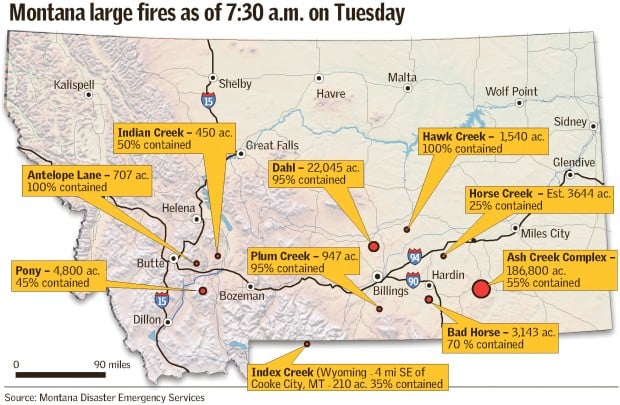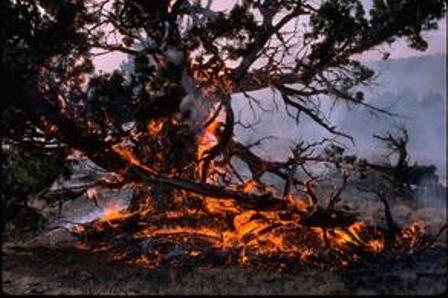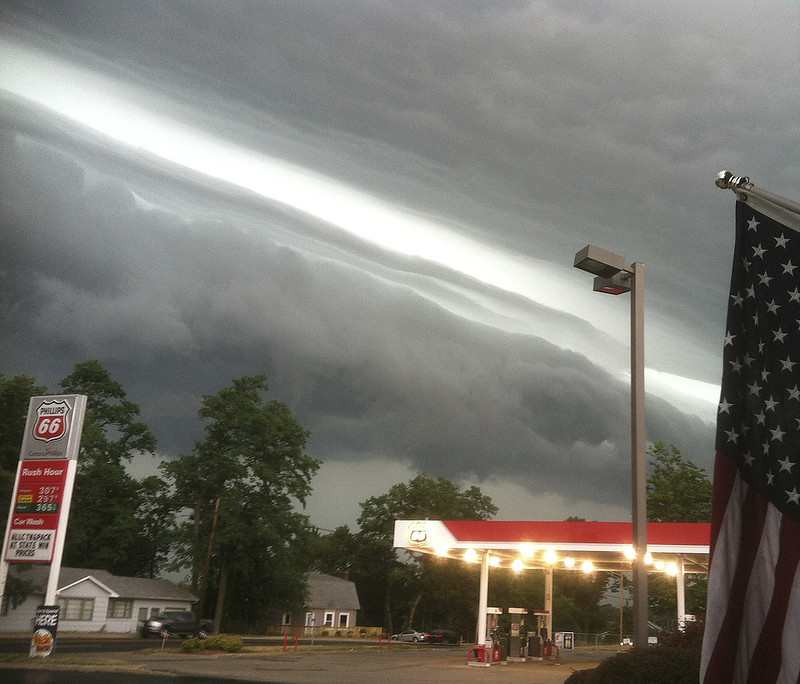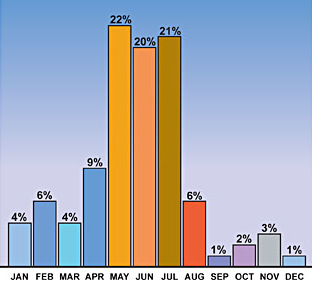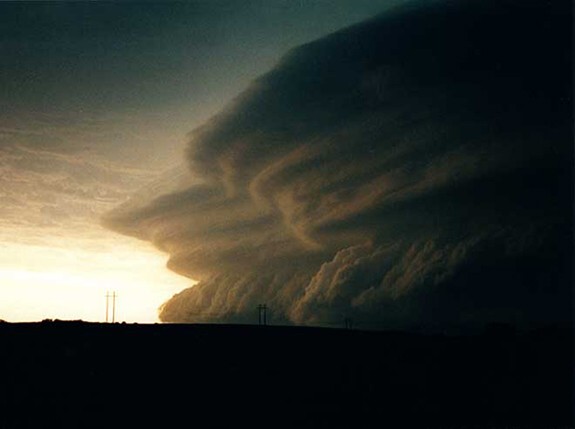So I'm watching water polo on the Olympics, and I keep thinking, man, that looks hard. I can't imagine treading water, fighting off the other player, and flinging the ball to the net, then having to swim as fast as possible to the other end of the pool.
On top of all that, I've heard that water polo is actually a rough sport, that there's a lot of scrapping and injuries. It looks pretty benign, with all that water and the bathing suits and the funny caps, so it's kind of hard to believe it's all that rough-and-tumble. The announcers aren't saying much about the behind-the-scenes--or under-the-water--truth about the sport. So it's time for the Apple Lady to find out.

Water polo. With all that splashing and waving of arms and swimming around, is it really that violent a sport?
(Photo from Wikipedia)
HOW PEOPLE DESCRIBE IT
NATURE OF PLAY

There's also this.
(Photo from Water Polo blog)

The eggbeater kick, which water polo players use to stay afloat while they're playing.
(Photo from coachesinfo.com)

Here's a shot of some of what goes on underwater during a water polo match. You can see people in the midst of their eggbeater kicks, but it also looks like the guy in the foreground may have just gotten shoved underwater by his opponent.
(Photo from SM Texas)

There are tons of great photos out there of water polo players in action, showing how strong they are. I can't show you any of them because they're all owned by Getty or Corbis. So you'll either have to click the link to see for yourself, or just trust me when I say, these are some impressive athletes.
PENALTIES

US Men's Water Polo team, 1996. I bet if it were safer to do so, and allowed, they would play without their bathing suits. OK, yes, this is some eye candy for some of you Daily Apple readers out there. But I posted this for another reason, which is to say, judging from how ripped these guys are, you probably have to be in this kind of super-great shape to play this sport. So I take this to be further evidence that this is a very physically demanding sport.
(Photo from The Hostages)

This is Lyuba Tschougounova, who played in junior college in 2009. Looks like she's fending off two opponents at once, one who is actively trying to block her, and the other at the ready.
(Photo from Concordia Eagles)

The hold, sink, or pull back rule. This rule seems to be quite a big gray area, judging from the rule book's efforts to define what is happening in each diagram. I'm guessing that it's like holding in football, that you're not supposed to do it, but that it happens all the time.
(Image from FINA Water Polo Rules)
This looks like this might qualify as a hold. Once again, I can't show it to you here. Thanks, Getty!

Striking with the elbow backwards is classified as a "brutality" and can get you kicked out of the game.
(Image from FINA Water Polo Rules)
INJURIES

This is Lauren Wenger. She was named the June Athlete of the Month in 2009 by the US Olympic Committee. Look at her enormous muscles in her shoulder. That speaks to how strong water polo players' shoulders get from having to whip the ball as hard and fast as they can.
(Photo from Women Sport Report)

Ervin Zador got punched in the eye during the "Blood in the Water" match between Hungary and USSR in the 1956 Olympics.
(Photo from Wikipedia)
And to put some of the fun back into it, here you go:

Sauce for the goose....
(Photo from magaz!nes.com)
[Edit: Here we go. This video shows the underwater truth pretty succinctly.]
Sources
FINA Water Polo Rules
iSport, Underwater Tactics for Water Polo
Stop Sports Injuries, Water Polo
Jeno Kiss, Department of Orthopedics and Trauma, St. John's Hospital, Budapest, Sport related injuries in water polo
Palm Desert water polo player's death stuns family, friends, Los Angeles Times, June 18, 2012
On top of all that, I've heard that water polo is actually a rough sport, that there's a lot of scrapping and injuries. It looks pretty benign, with all that water and the bathing suits and the funny caps, so it's kind of hard to believe it's all that rough-and-tumble. The announcers aren't saying much about the behind-the-scenes--or under-the-water--truth about the sport. So it's time for the Apple Lady to find out.

Water polo. With all that splashing and waving of arms and swimming around, is it really that violent a sport?
(Photo from Wikipedia)
HOW PEOPLE DESCRIBE IT
- One of the ways of knowing the nature of a thing is by how people describe it. Here are some of the ways people describe water polo:
- "A unique combination of swimming, throwing, and martial arts."
- "The only contact sport played in the water"
- "An aquatic form of rugby." My brother played rugby for a while. His face after a rugby match was usually pretty colorful with bruises and scratches and scrapes. If water polo really is like rugby, then it must be pretty high-contact.
NATURE OF PLAY
- But they wear those funny-looking caps. The caps are funny-looking, but there are reasons for that. They tie under the chin so they won't come off when a player goes underwater, or is dunked, or is pushed or shoved.
- The reason you don't want the cap to come off is because it includes ear protectors. The ear protectors aren't to keep water from trickling into and clogging your delicate ears, but rather to shield your ears from getting bashed by an opponent's elbow, or from getting slapped by an opponent and your ear drum bursting as a result.

There's also this.
(Photo from Water Polo blog)
- But all they're doing most of the time is treading water and waving their arms around.
- OK, first, the treading water part. To stay afloat while you're playing, you have to do what looks like treading water. But the motion is different and harder than that. The especially effective method of treading water is called the "eggbeater kick." You lift one leg at a bent position, as if you're sitting in a chair, while you kick out the other leg sideways and rotate it in a circle. Then you switch legs and do the same thing.

The eggbeater kick, which water polo players use to stay afloat while they're playing.
(Photo from coachesinfo.com)
- Since kicking out your leg is a motion essential to the sport, it's easy to kick or be kicked accidentally. And since it's hard for the refs to see from above water what's going on below the surface, getting kicked happens not so accidentally, and often, and without penalty. Usually, if an opponent kicks you, it's to try to keep you at a distance so the opponent can catch the ball or score or keep from being blocked.

Here's a shot of some of what goes on underwater during a water polo match. You can see people in the midst of their eggbeater kicks, but it also looks like the guy in the foreground may have just gotten shoved underwater by his opponent.
(Photo from SM Texas)
- As for the waving of the arms, that's part of defending, or reaching out to catch the ball. As it turns out, lots of penalties happen during the defending process. More on that in a second, but first:
- If you still think this is wimpy, you try raising yourself up out of the water high enough to throw a ball over someone's head, and faster than they can reach out to stop it -- all while not being able to stand on anything.

Look how high out of the water this guy is. He's not standing on anything, he's just doing his special eggbeater kick to propel himself up higher out of the water.
(Photo from NorCal Water Polo)
There are tons of great photos out there of water polo players in action, showing how strong they are. I can't show you any of them because they're all owned by Getty or Corbis. So you'll either have to click the link to see for yourself, or just trust me when I say, these are some impressive athletes.
PENALTIES
- A good way to assess how violent or physical-contacty a sport is is by what behavior has been banned. This suggests that, even though such & such is not allowed, it does happen, and they've had to make a special rule outlawing that behavior.
- So I'll talk about the types of fouls that happen in water polo, from least serious to most serious. This is leaving out penalties like violating the amount of distance you're supposed to keep from the goal, or what you're not allowed to do when you're out of the pool, etc. I'm only going to mention the physical types of fouls.
- In addition to kicking, opponents can get away with lots of infractions which are technically not allowed, but which the refs tend not to see because they happen underwater.
- Wrist-holding: an opponent may grab your wrist and hold it in order to keep you from going after the ball or from raising your arm to defend against you. As long as your wrist is underwater, they can usually get away with it until you break their grip
- Grab-and-go: say you're on defense, in front of an offensive player. The offensive player reaches across to grab your arm and, using you like a stationary object, pulls herself forward ahead of you.
- Suit-grabbing: players don't grab opponents' bathing suits to disrobe and embarrass them, though that may happen. The men grab each other's suits at the waist to keep a defender low in the water and unable to block, or to keep an offensive player from getting up in the water to make a shot. Female players may do the same thing, or they may also grab another player's shoulder straps, but since it's easier to get your shoulders out of the water, it's easier to attract the ref's attention and get a penalty called. (Mutual suit-grabbing here)
- Since suit-grabbing is pretty common, water polo players wear bathing suits that are as small and snug as possible. Women water polo players are required to wear one-piece suits.

US Men's Water Polo team, 1996. I bet if it were safer to do so, and allowed, they would play without their bathing suits. OK, yes, this is some eye candy for some of you Daily Apple readers out there. But I posted this for another reason, which is to say, judging from how ripped these guys are, you probably have to be in this kind of super-great shape to play this sport. So I take this to be further evidence that this is a very physically demanding sport.
(Photo from The Hostages)
- There are, of course, many physical-contact things you're not allowed to do, and which will get a penalty called against you if you did them. Since these things are outlawed in the rule book, I'm assuming that they do happen.
- Swimming across an opponent's legs.Your opponent is leaning forward for the ball, almost lying flat in the water, and you swim across her legs so that she can't swim as fast. Presumably you could get kicked, but she'll slow down, and you get to cut a corner essentially, and cut her off.
- Swimming on the opponent's shoulders. Yes, that's right, I said "on." As far as I can tell, this means essentially, swimming over an opponent, or pressing down on his shoulders to make him sink as you're swimming.
- Any other form of impeding, meaning you're somehow physically restraining the other person or holding them back or down in the water. If the impeding looks violent or intentional, you can get kicked out of the game (more on that in a bit).
- Striking the ball with a clenched fist. This puts too much force into a strike, but it also makes it likely that you would punch somebody by mistake. So you have to smack the ball with an open palm, which means you might slap somebody by mistake, but that's OK.

This is Lyuba Tschougounova, who played in junior college in 2009. Looks like she's fending off two opponents at once, one who is actively trying to block her, and the other at the ready.
(Photo from Concordia Eagles)
- There are a whole series of infractions which are all classified as "acts of brutality." I am not exaggerating. If a player is found to be committing an act of brutality, the payer is s kicked out (excluded) for the rest of the game, and a player from the opposing team gets a free shot at the goal (penalty throw).
- An act of brutality is defined as playing "in a violent manner, including kicking, striking or attempting to kick or strike with malicious intent against an opponent or an official." Yes, against an official.
- Here are acts of brutality in water polo:
- Intentionally splashing an opponent in the face
- Holding (grabbing onto), sinking (pushing down into the water), or pulling back (grabbing onto and pulling away) an opponent who is not holding the ball. Any of these things are allowed, apparently, if an opponent does have the ball.

The hold, sink, or pull back rule. This rule seems to be quite a big gray area, judging from the rule book's efforts to define what is happening in each diagram. I'm guessing that it's like holding in football, that you're not supposed to do it, but that it happens all the time.
(Image from FINA Water Polo Rules)
This looks like this might qualify as a hold. Once again, I can't show it to you here. Thanks, Getty!
- Kicking or striking an opponent intentionally
- Using the elbow to strike backwards to hit an opponent behind you
- Head butting backwards to do the same

Striking with the elbow backwards is classified as a "brutality" and can get you kicked out of the game.
(Image from FINA Water Polo Rules)
- The key here, I suspect, is that the refs first have to see that you've committed the infraction, and then they have to interpret your actions as violent and intentional. A player may think another player's actions are violent and intentional, but until the ref agrees, you may be stuck trying to fight the guy off.
INJURIES
- Another way to find out how rough the spot is would be by finding out what kinds of injuries are common to water polo players.
- As in any sport, there are lots of overuse or repetitive motion injuries. In water polo, those happen especially to the shoulder or elbow from throwing, or to the lower back from rotating while throwing, and to the groin and knee, from doing the "eggbeater kick." And because it's a water sport, water polo players can also get inflammation in the ear canal, a.k.a. swimmer's ear.
- Most of the injuries in water polo fall in this overuse category, and most of the injuries are to the shoulder.

This is Lauren Wenger. She was named the June Athlete of the Month in 2009 by the US Olympic Committee. Look at her enormous muscles in her shoulder. That speaks to how strong water polo players' shoulders get from having to whip the ball as hard and fast as they can.
(Photo from Women Sport Report)
- But what about injuries sustained as a result of contact with other players? What are those like?
- Contusions, or bruises, are very common, especially to the face.
- Lacerations, or cuts, are common too. You can get cut when the ball hits you in the face, or by a player's fingernails or toenails.
- There are lots of eye injuries, including cuts to the face around the eye or cheekbone, black eyes, bleeding into the eye, scratched corneas, etc.
- Some players even sustain "blow-outs" or complete fractures of the bone around the eye.
- Sprains & fractures. Most often, these happen to fingers, which get hyperextended or bent or bashed when a speeding ball hits the hand at a strange or unexpected angle. But sometimes the sprain or fracture happens because of contact with an opponent.
- Concussions or head injuries. These aren't that common, but they do happen, usually happen as a result of getting elbowed in the head or head-butted.
- Spine injuries. These can be a repetitive motion injury, from turning your head to breathe during freestyle swimming. But some players have sustained cervical spine injuries due to blows to the shoulder area from another player.
- Fatal intracranial bleeding. In other words, a head injury that has resulted in internal bleeding on the brain, from which someone died. I don't know any details about how this happened, only that it did happen to a water polo player.

Ervin Zador got punched in the eye during the "Blood in the Water" match between Hungary and USSR in the 1956 Olympics.
(Photo from Wikipedia)
- Recently, a sixteen year-old boy in Southern California who had just made the water polo team died during practice. He said he was thirsty, got out of pool to get a drink of water, got back in the pool, and later, he was found unconscious at the bottom of the pool. As of this writing, no cause of death had been officially determined.
And to put some of the fun back into it, here you go:

Sauce for the goose....
(Photo from magaz!nes.com)
[Edit: Here we go. This video shows the underwater truth pretty succinctly.]
Sources
FINA Water Polo Rules
Stop Sports Injuries, Water Polo
Jeno Kiss, Department of Orthopedics and Trauma, St. John's Hospital, Budapest, Sport related injuries in water polo
Palm Desert water polo player's death stuns family, friends, Los Angeles Times, June 18, 2012

